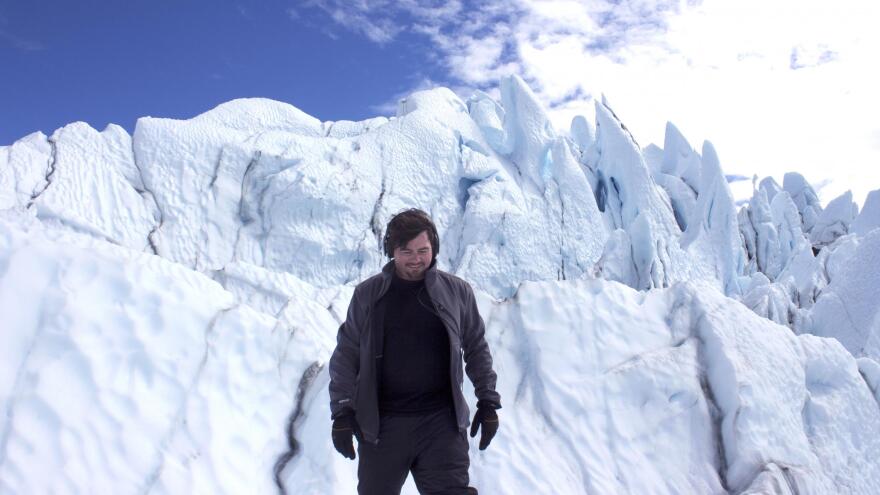When they hear statistics about climate change or see graphs and charts, many people shut down – unwilling to think about what could be the most serious issue of our times. To draw them back into a conversation about our warming planet, two faculty members at UVA are using something called eco-acoustics – sounds that illustrate the relationship between humans and their environment.
Willis Jenkins teaches religious studies, but lately he’s been called to the coast, to record the sounds of sea level rise and oyster reefs.
“When you hear the reef recording you’re going to hear a snapping or cracking sound, and that is actually pistol shrimp, and then you can also hear kind of micro-currents of water moving in and around the reef, and there may be a few low fish calls,” he says.
People who hear that recording are drawn into dialogue.
“The sound element is so captivating that people ask lots of questions about it," he explains. "Then they begin to ask questions about organisms and data change over decades, in conversations that typically go longer than if I were to just tell you about the health of these wetlands.”
His colleague in UVA’s music department agrees. Matthew Burtner is now working from a cabin near Anchorage, where he’s recording glaciers as they melt slowly --- or suddenly fall into the sea.
“It’s an amazing symphony of sounds actually," Burtner says. "There are incredibly low, booming sounds. They sound like jet engines as these large pieces of ice calve and fall, and then there are most delicate tinkling, trickling sounds that you’ve ever heard – these little tiny patterns of water moving across the ice as the ice melts and creates little tiny melodies, little tiny rhythms, and the whole surface of the glacier is just alive with sound.”
After recording the sounds of the arctic, he translates climate data into notes and combines them to create compositions that tell the story of global warming. Hearing it, he says, is fundamentally different from reading or talking about climate change.
“A lot happens when we shift our focus from looking at the world and moving in the world to just listening to the world. It’s a more contemplative way of being," he explains. "If we could understand the glaciers as a complex symphony of sound the way we listen to Beethoven, that could do a lot for our relationship to the natural world.”
The work itself is challenging. It was 65 degrees in Charlottesville when I reached Burtner in Alaska’s Chugach Mountains. There, he said, conditions were very different.
“Today it’s three degrees and it’s snowing outside," he told us. "You know, to do anything you have to shovel out and then you’re constantly trying to keep the equipment warm, because the equipment is not designed to function in sub-zero temperatures.”
But he loves being outside in any weather, and recording off the Eastern Shore is a pleasure. He and Jenkins can now assess the health of an oyster reef through sound and monitor the size of crustaceans by listening to what they call crab flutes – sounds heard as the wind blows over holes in the sand.
“We hoped to be able to record the crab, but the crab made almost no sound, and we couldn’t hear it, but we could hear the wind whistling over the top of the crab glute – this wind instrument that the crab has made,” Jenkins says.
You can hear them when Burtner and Jenkins host a conference at the Coastal Futures Conservatory on the Eastern Shore in September, and enjoy compositions inspired by the arctic on March first, as part of a National Geographic science and story-telling event at the University of Virginia.
***Editor's Note: The University of Virginia is a financial supporter of Radio IQ.
This report, provided by Virginia Public Radio, was made possible with support from the Virginia Education Association.



